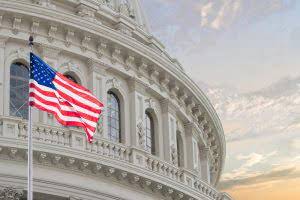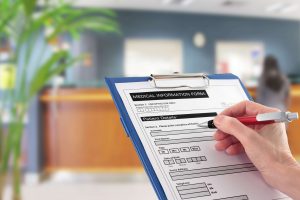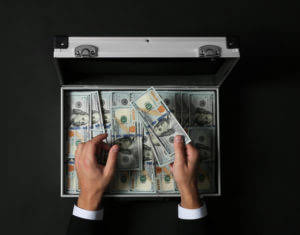Content

These assets may include patents, royalty arrangements, copyrights, goodwill, and life insurance on officers and key employees. Often, intangibles are not included on a balance sheet because of the difficulty of valuing them.
- Creditors are interested in the proportion of current assets to current liabilities, since it indicates the short-term liquidity of an entity.
- Allows you to figure the depreciation, amortization, depletion, casualty losses, and any profits or losses if you sell your property.
- Inventories form all kinds of inventories, whether raw material, work-in-progress stock, or finished goods.
- It’s counted under current assets because it is money the company can rightfully collect, having loaned it to clients as credit, in one year or less.
Cash or other assets that are expected to be converted into cash, consumed, or sold within one year or during the normal operating cycle of the business, whichever is longer. Current assets are listed on the company’s balance sheet and include cash, accounts receivable, prepaid insurance, and office supplies. Non-current assets are items such as land, buildings, and office equipment.
First Known Use Of Current Assets
His background in tax accounting has served as a solid base supporting his current book of business. Current assets are important for many different reasons and here are some examples. Assets are categorized as either current or long term based on how long they will be held by the company. Any type of business is going to require some sort of asset in its lifetime for one purpose or another. Accounts receivable are funds that a company is owed by customers that have received a good or service but not yet paid.
As we know, current liabilities are short-term debts and obligations a company has, such as wages payable and accounts payable. Continue reading below to discover all there is to know about current assets, or use the provided jump links to navigate to a section that may answer your question on how to calculate current assets. Only assets that can be converted into cash within one year are classified as current assets, and they are often used to measure a company’s short-term financial health. Current assets are generally reported on the balance sheet at their current or market price. A current asset is any asset a company owns that will provide value for or within one year. Current assets are often used to pay for day-to-day-expenses and current liabilities (short-term liabilities that must be paid within one year).
- This ratio expresses the relationship between capital contributed by creditors and that contributed by owners.
- These formulas can then be used in conjunction with the current liabilities, non-current liabilities, and long-term liabilities formulas to calculate total liabilities and the shareholder’s equity of your company.
- Only assets that can be converted into cash within one year are classified as current assets, and they are often used to measure a company’s short-term financial health.
- Capital costs are purchases that are so expensive, they would offset a company’s profit dramatically if the total amount of the expense was claimed on the company’s income taxes for the same year it was purchased.
Current assets help fund business operations and are used to pay current expenses, such as rent and utility bills. There are numerous types of current assets, which include cash, cash equivalents, inventory, accounts receivables, marketing securities, and prepaid expenses.
Your current liabilities are obligations that you will discharge within the normal operating cycle of your business. In most circumstances your current liabilities will be paid within the next year by using the assets you classified as current. The amount you owe under current liabilities often arises as a result of acquiring current assets such as inventory or services that will be used in current operations. You show the amounts owed to trade creditors that arise from the purchase of materials or merchandise as accounts payable. If you are obligated under promissory notes that support bank loans or other amounts owed, your liability is shown as notes payable.
Balance Sheet Gcse
Housecall Pro is a top-rated, all-in-one business solution that helps home service professionals work simpler and grow smarter. Allows you to figure the depreciation, amortization, depletion, casualty losses, and any profits or losses if you sell your property. For Home Depot, their Net Working Capital would be $1,813,000 ($18,529,000 – $16,716,000).
The quick ratio measures a company’s liquidity by looking only at a company’s most liquid assets and dividing them by current liabilities. It helps determine whether a business can meet its obligations in hard times.

When a company is not able to generate enough profits, it may borrow money from the bank, which means the money sitting on its balance sheet as cash is actually debt. To find out, you will have to look at the amount of debt the company has, which is shown in its balance sheet liabilities section. Typically, a common stock investor is going to be happiest when the stock market heads down if she owns a large, profitable business with enormous cash reserves and little to no debt. Such a strongly capitalized business can take advantage of a tough financial climate to buy up competitors for a fraction of their true value. Short-term investments aren’t as readily available as money in a checking account, but they provide added cushion if some immediate need were to arise. These are investments that a company plans to sell quickly or can be sold to provide cash.
The First Known Use Of Current Assets Was Circa 1909
US Treasury bills, for example, are a cash equivalent, as are money market funds. Designed for freelancers and small business owners, Debitoor invoicing software makes it quick and easy to issue professional invoices and manage your business finances. It is a measure of how dependent a company is on borrowing rather than equity. Accrued expenses are payroll and payroll taxes which are due for the work done by employees but which have not yet been paid. Notes payable and loans are money due to lenders within the next year. Below is a sample balance sheet, with definitions and descriptions of the key elements.
Investors want to know that their invest will continue to grow and the company will be able to pay returns in the future. Creditors, on the other hand, simply want to know that their principle will be repaid with interest.
This ratio expresses the relationship between capital contributed by creditors and that contributed https://www.bookstime.com/ by owners. It expresses the degree of protection provided by the owners for the creditors.
Remove Ghost Assets From Your Inventory
The other assets are only held because they provide useful services and are excluded from the current asset classification. If you happen to hold these assets in the regular course of business, you can include them in the inventory under the classification of current assets. Current assets are usually listed in the order of their liquidity and frequently consist of cash, temporary investments, accounts receivable, inventories and prepaid expenses. In simple words, assets which are held for a short period are known as current assets. Such assets are expected to be realised in cash or consumed during the normal operating cycle of the business. On a balance sheet, assets will typically be classified into current assets and long-term assets. On the equity side of the balance sheet, as on the asset side, you need to make a distinction between current and long-term items.

To calculate Home Depot’s total assets, simply add their current assets ($18,529,000) to their long-term assets ($25,474,000). With these numbers, you’ll come up with $44,003,000 for Home Depot’s total assets. Companies that are trying to create a strong brand and invested large sums of money in obtaining these intangible items can add these assets to their company’s value. However, because intangible assets have little liquidity, they can’t be used as collateral for loans. Additionally, intangible assets must be purchased in order for them to be recorded in your balance sheet. Together, current and non-current assets form the assets side of the balance sheet, meaning they represent the total value of all the resources that a company owns. If customers and vendors won’t pay their debts, the AR isn’t that liquid.
Current assets are important to ensure that the company does not run into a liquidity problem in the near future. Yes, short-term investments are considered current assets for accounting purposes.
Improve The Accuracy Of Your Financial Statements
The study provides an empirical research of reporting financial statements in accordance with IFRS. Therefore, the current research is a quantitative one, using Disclosure Index to measure the level of exposure of information regarding the assets. The results demonstrate both the applicability, but also the validity of the model Disclosure Index; thus there is a link between the variables analyzed and disclosures in accordance with IAS 16, IAS 36 and IAS 38. Depending on the industry of the company in question, a current asset could be anything from crude oil to foreign currency. For example, an auto manufacturer may count auto parts as a current asset. On the other hand, a mutual fund may count short term investments or bonds.
A current asset, also known as a quick asset, refers to cash or an asset that a company can convert into cash quickly. Quick assets are under a subset known as current assets, and they do not include inventory. Therefore, the quick assets are the most highly liquid assets that a company can hold, including accounts receivable and marketable securities. Quick assets, however, do not include non-trade receivables like loans because they are difficult to convert into cash quickly. The “quick” or “acid-test” ratio is another liquidity ratio that is more conservative than the current ratio.

Inventory that is purchased by consumers and moves quickly is known as fast moving consumer goods, or FMCG, and is the primary type of inventory that also falls under the category of current assets. Cash and cash equivalents are the most liquid of assets, meaning that they can be converted into hard currency most easily. This figure can be important to creditors, for example, who will view the ratio as your company’s ability to meet deadlines and obligations in the short-term. Current assets can be sold or converted into cash within one year of acquisition and play a vital part in managing the cashflow of your business. Inventories are usually the largest current asset of a business, and proper measurement of them is necessary to assure accurate financial statements.
Current Assets Vs Noncurrent Assets: What’s The Difference?
Quick Ratio- Measures a company’s ability to quickly pay off its current liabilities using its cash and highly liquid cash-like assets. Overstating current assets can mislead investors and creditors who depend on this information to make decisions about the company. It’s important for each of these accounts to be evaluated and adjusted throughout time with valuation accounts. For example, accounts receivable can become worthless over time if customers and vendors are unwilling or unable to make their payments. Thus, the receivables account must be adjusted to reflect the amount of receivables that management expects to convert into cash in the current period. A current asset is a company’s cash and its other assets that are expected to be converted to cash within one year of the date appearing in the heading of the company’s balance sheet. However, if a company has an operating cycle that is longer than one year, an asset that is expected to turn to cash within that longer operating cycle will be a current asset.
Assets
What is the proper amount of cash a company should keep on its balance sheet? It is calculated by subtracting your current liabilities from your current assets. One important rule to note when accounting for long-term assets is that they appear on the balance sheet at their market value on the date of purchase. Here’s a current assets list with a little more information about how GAAP treats each account. These assets are initially recorded at their fair market value or cost. For instance, cash and accounts receivable are recorded at their cash values. Notes that mature within a year or the current period are often grouped in the current assets section of the balance sheet.
Noncurrent assets are long-term and have a useful life of more than a year. The key differences to know about current and fixed assets is their life span , how quickly they can be converted to cash, and whether the asset will be depreciated or not. For example, if a company is unable to make a profit to pay its debts, it can quickly sell its marketable securities in exchange for cash to meet its obligations.
Cash converted into raw material, which again converts to finished goods, further that converts into account receivables, and finally, account receivables are converted back into cash. Wages payable include the amount of money you owe each employee per pay period.
What Is The Formula To Calculate Current Assets?
Fixed assets, or noncurrent assets, are long-term properties that bring continual value to your business beyond a year (e.g., land). Fixed assets are the foundation of your small business and brings long-term value to your business as it grows. Unlike current assets, fixed assets can’t be converted into cash within one year. Liquid assets are assets that you can quickly turn into cash (e.g., stocks). For example, you can convert liquid assets into cash in a very short period of time, like one month or 90 days. Current assets are items of value your business plans to use or convert to cash within one year.
